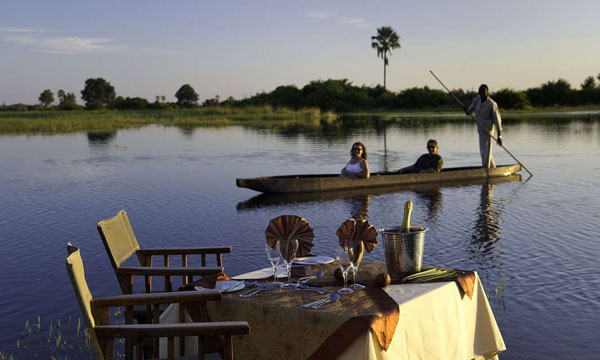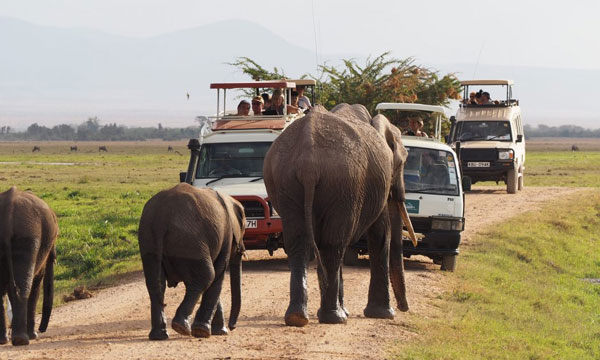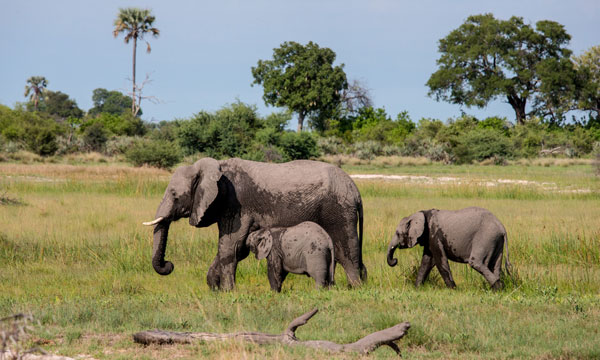Call Us
8:00am - 17:00PM
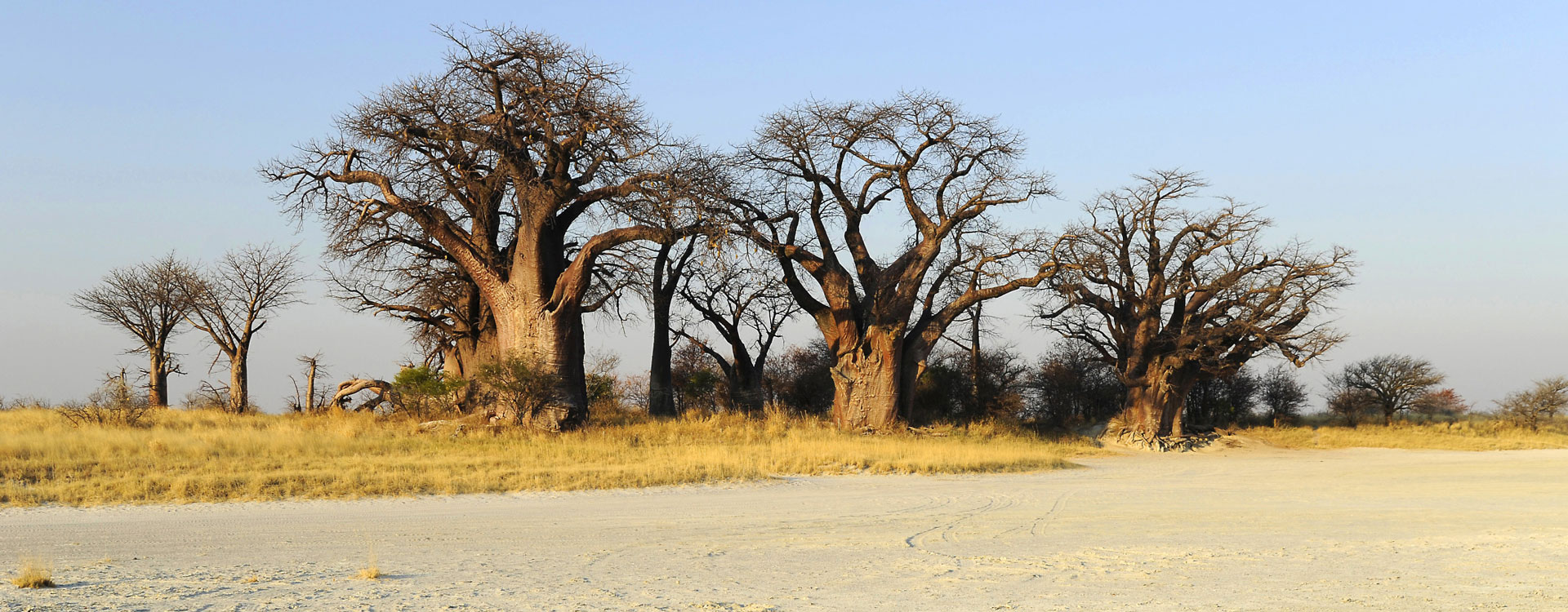
Makgadikgadi Salt Pans
About Makgadikgadi Salt Pans
The Makgadikgadi Salt Pans are one of Botswana’s main tourist attractions. They are natural remnants of what was once the largest inland sea in the world some 2 thousand years ago. Today, they are the largest salt pans in the world and were declared a UNESCO World Heritage Site. They represent beauty, nature and uniqueness.
MAKGADIKGADI SALT PANS TOURS & SAFARIS
We Think You’ll Love
BEST TIME TO VISIT
The Best Time To Visit Makgadikgadi Salt Pans is during the wet season, from December to April. This period sees the transformation of the arid land into a lush oasis, drawing in thousands of animals like gemsbok, wildebeest, and giraffes for the fresh grazing available on the plains, along with predators such as cheetahs and the iconic black-maned lions of the Kalahari. While the park welcomes visitors year-round, these months offer a vibrant spectacle of wildlife and scenic beauty.
WILDLIFE
The Makgadikgadi Salt Pans buzz with unique wildlife. Here, you'll find large groups of zebras and wildebeests travelling across the land. They're followed by oryx, eland, and red hartebeests looking for food. Predators like hyenas, leopards, and lions are also around, especially where zebras roam. Even in the dryest parts, springbok and oryx manage well, while at twilight, creatures such as aardwolves, bat-eared foxes, and striped polecats come out. This place offers a remarkable glimpse into Africa's wildlife diversity.
What To Experience
we think you will love
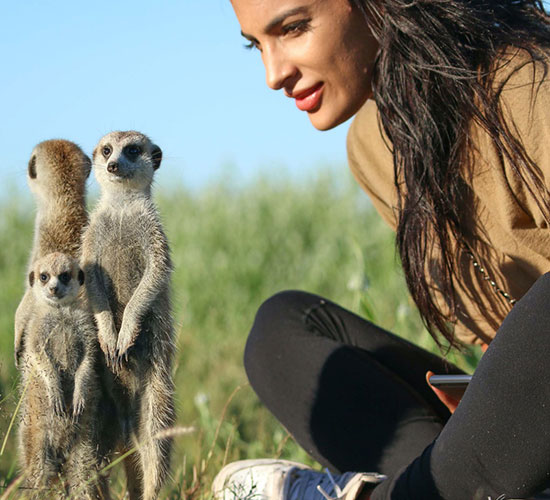
Guided Walking Safaris
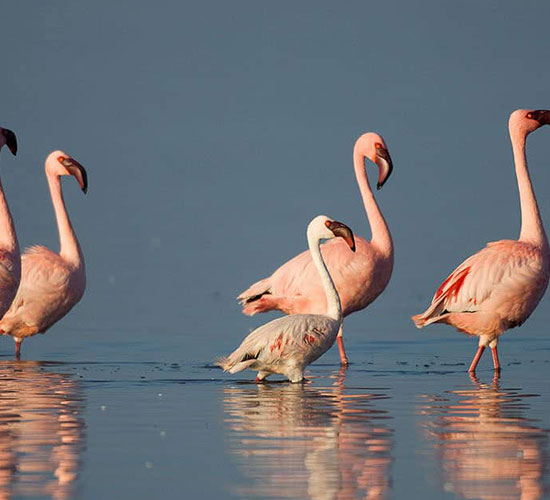
Bird Watching
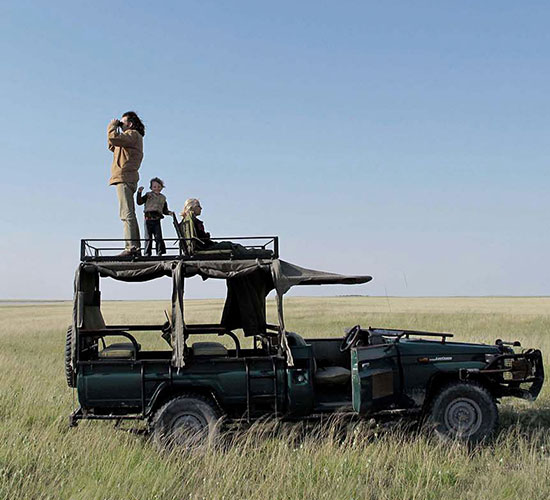
Game Drives
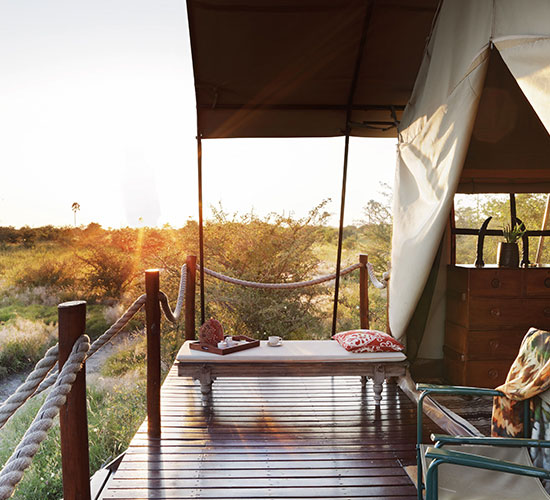
Tour of the Gweta
Travel Guide For Makgadikgadi Salt
We Think You’ll Love
Makgadikgadi Salt Pans Map
The salt pans are situated in the North-Eastern part of Botswana. They are also south of the Nxai Pan National Park and are to the south-east of the Okavango delta. They cover an area of over 30 000sq km and are surrounded by the Kalahari.
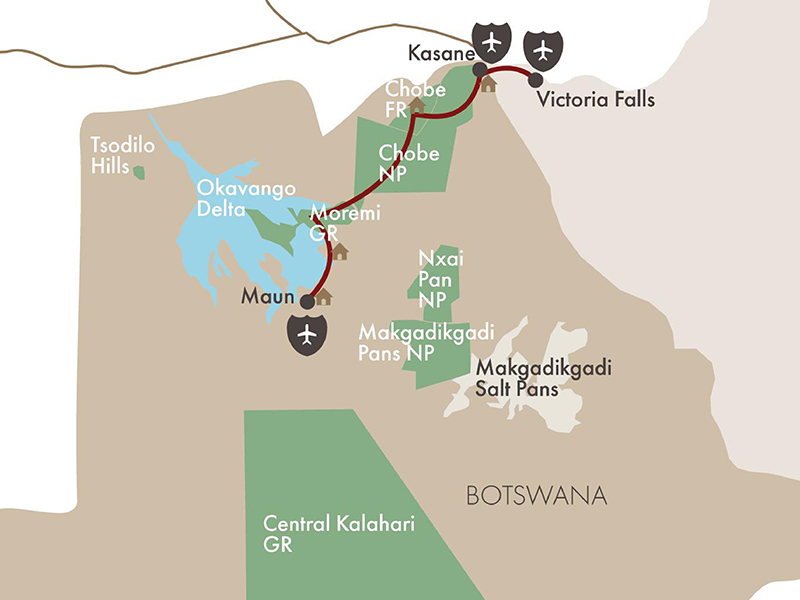
Makgadikgadi Facts
- The salt Pans cover 20% of the Makgadikgadi National Park
- David Livingstone, the Scottish Missionary who discovered the Victoria Falls, crossed the salt pans in the 19th century.
- There are incredible colonies of flamingo in the area.
- It supports one of the largest zebra populations in Botswana during the rains from January to March. (about 20 000)
- Most common animals are the brown hyena and meerkats
About The Popular Migration In Makgadikgadi Salt Pans
The second-largest migration of African ungulates is the Makgadikgadi Migration. They travel 35 kilometers round trip from the Boteti River to the Makgadikgadi salt pans in northern Botswana, with the bulk of them being zebra. As soon as the rains start, millions of Burchell's zebra and blue wildebeest migrate to the Makgadikgadi pans to eat on the delicious summer grasses and benefit from the high mineral content of the salt pans. The greatest time to witness the biggest herds is during the first two weeks of March, in our opinion. This is because the majority of the migration will still be in the area, assuming the rains have not been exceptionally low.
How To Get To The Makgadikgadi Salt Pans ?
The enormous, flat Salt Pans are situated in the northeastern Kalahari Desert, inside the national park in Botswana that bears their name, and they span an area of several thousand square kilometres. They are the only trace of a vast inland super-lake that once existed but slowly vanished over thousands of years, leaving the pristine, salty-white landscapes of today.
The Makgadikgadi Pans National Park is 162 kilometers east of Maun. A self-drive safari, a guided mobile safari, or a fly-in safari are all options for getting to the park. The quickest and most convenient way to reach the park is to take a chartered flight to one of the lodges' airstrips on the park's western edge. While some campsites for mobile safaris are located closer to the actual pans, all lodges are quite a distance from them. Another option is to travel into Zimbabwe's Victoria Falls Airport (VFA) and start the adventure there. Victoria Falls is 550 kilometres (340 mi) away.
What You Need To Know About Makgadikgadi Salt Pans
The Okavango Delta, Linyanti, and Chobe National Park are livelier locations if you're visiting Botswana to see big game; avoid the pans. The only time this is not true is during the wet season, which lasts from late December to early May and is when the herds truly bring the place to life. The zebra migration during the year is beautiful to see in the Makgadikgadi.
Best Time To Visit The Makgadikgadi
The Best Time To Visit Makgadikgadi Pans is during the wet season (Dec.-Apr.), when the park will have the most wildlife, while the roads may be occasionally muddy. The pathways will be submerged, so you won't be able to go to the edge of the big salt pan itself either. The enormous, empty salt pan in the southeast of the park can be seen during the dry season, and animals will concentrate around the Boteti River, which forms the park's western border. The river is brimming with water from the Angolan Highlands at this time of year, while the area around it is completely dry.
They are home to desert-adapted fauna like meerkats and provide a breath-taking view of endless stretches of white salt as far as the eye can see during the dry months. The rains turn the salt pan into a spectacular shallow lake during the rainy months, drawing a great deal of zebra, springbok, and wildebeest (the second-largest migration after that in the Serengeti), as well as flamingos that are in breeding season. You won't soon forget it because of the fantastic atmosphere created by the vast, empty areas and nothingness.
What To See And Do In Makgadikgadi
Flamingo Feels
From the perspective of birders, the cooler, wetter winter months are also a fantastic time to spot flamingos because both the greater and lesser flamingos migrate to the pans for food, mating, and egg-laying. One of the most significant flamingo breeding areas in Africa, the brilliant pink flamingos stand out strikingly against the saltwater lake.
Zebra Migration
The rains radically alter the ecosystem during the wetter months (December to March). Predators like cheetahs and lions follow closely behind the second-largest zebra migration in Africa as it moves west from the Boteti River to graze on lush grasses that absorb the nutrients around the pans.
Njuga Hills & Xhumaga
The Makgadikgadi Reserve contains two places that are particularly of visiting. The Njuga Hills are one, while Xhumaga on the Boteti River is the other. An old dune with particularly vast dimensions is called Njuga. As the sun sets on another day, one can observe the boundless grasslands turn gold while listening to the barking geckoes. On the left bank of the Boteti River, on the opposite side of the Xhumanga settlement. It is remarkably situated in the ecotone between Makgadikgadi Reserve's grasslands and riverine woods. As the Boteti has historically been a river that empties into the sand, there is an abundance of birds and interesting landscape.
Walk With The Bushmen
Another important area of research is understanding about the Zu/'hoasi Bushmen's abilities and knowledge, as well as how they have managed to live in the harsh desert environment. Their knowledge is deep and to have the chance to get out and explore on foot with them is a real honor.
Game Drives/ Quadbikes
All year long, game drives are also an option, but it's vital to consider the weather. Rainfall gradually fills the salt pans throughout the humid summer months, creating a massive shallow lake that blocks access for cars and ATVs. The winter months are the greatest for exploring the salt pans because they are dry and a thrilling way to move around them is on a quadbike. This thrilling activity, which has no impact on the pans, is accessible to all visitors as part of their stay at Jacks Camp, San Camp, and Camp Kalahari.
Marvel At The Saltpans
The Makgadikgadi salt pan is the biggest and most remote in the entire globe. It’s a truly amazing landscape of dazzling white salt that can be seen to the horizon and the lack of light pollution adds some incredible star gazing at night as the stars pop out against the pitch-black sky.
See Desert Animals
The main advantage of the Makgadikgadi is its ability to provide sightings and experiences which you will not find anywhere else. Desert adapted animals such as the aardwolf and brown hyena are numerous here, and the chances of stumbling upon one during a night game drive are high. The lack of grassland around the saltpans provides a clear space to spot animals from a distance a making night drives a must.
You should thoroughly consider your motivations for going to the Makgadikgadi Salt Pans. The Things To Do In Botswana offered by the camps and the camps themselves are significantly dissimilar. The dry, lush lands that are home to Botswana's top game are contrasted admirably by the pans. If a customer is planning to stay longer than a week in the country, Falcon Safaris advise that they try to explore the area; nevertheless, it is crucial to talk with an experienced adviser and learn about the advantages of visiting at various seasons of the year.
Best Month to Visit Makgadikgadi Salt Pans
We Think You’ll Love
Peak
Low
Mixed
Makgadikgadi Salt Pans in January
January brings the rains to the Makgadikgadi Salt Pans, transforming the landscape into a lush paradise. This is a spectacular time for bird watchers and wildlife enthusiasts as the area becomes a breeding ground for flamingos and a host of migratory birds.
Makgadikgadi Salt Pans in February
The wet season continues through February, offering stunning green vistas across the pans. The abundant water attracts wildlife, making it the Best Time to Visit Makgadikgadi Pans for photographers and nature lovers to capture the vibrant life that thrives in this transformed ecosystem
Makgadikgadi Salt Pans in March
As March arrives, the pans are still lush, with the wildlife migration in full swing. This period allows for the unique experience of seeing zebra and wildebeest herds grazing on the rich, green plains, a rare sight in this usually arid area.
Makgadikgadi Salt Pans in April
By April, the rains start to diminish, but the pans retain their water, making it the last month to witness the spectacular greenery and the tail end of the migratory wildlife before the dry season begins.
Makgadikgadi Salt Pans in May
In May, the transition to the dry season is underway. The landscape begins to change back to its iconic vast, white salt crusts. It's a time of change, offering the last chance to see the pans' temporary water bodies and their avian visitors.
Makgadikgadi Salt Pans in June
June marks the start of the dry season, with clear skies and cooler temperatures. The stark, beautiful expanses of the salt pans become the main attraction, offering breathtaking sunsets and the chance to see stars in unparalleled clarity.
Makgadikgadi Salt Pans in July
The heart of the dry season, July, brings cold nights and warm days. This is the perfect time for exploring the vastness of the pans on foot or by 4x4, experiencing the solitude and the surreal beauty of this ancient lakebed.
Makgadikgadi Salt Pans in August
August sees the continuation of the dry season, with windy days beginning to set in. The landscape is at its most dramatic, with the endless horizon visible and the surface of the Makgadikgadi Salt Pans often shimmering under the intense sun.
Makgadikgadi Salt Pans in September
September is still dry, but the temperatures start to rise, preparing for the upcoming wet season. The pans remain a spectacular sight, with early morning and late afternoon drives offering comfortable conditions to explore this unique environment
Makgadikgadi Salt Pans in October
October is the hottest month, signalling the end of the dry season. The anticipation of rain starts to build, and the first migratory birds may begin to arrive, announcing the coming changes to the pans' ecosystem.
Makgadikgadi Salt Pans in November
The rains begin in November, slowly transforming the pans. This is the start of the wet season, bringing new life to the area. It's an exciting time to Visit Makgadikgadi Salt Pans, as the first rains start to fill the pans, attracting wildlife back to the area
Makgadikgadi Salt Pans in December
December is fully into the wet season, with the pans increasingly filling with water. This month offers a lush landscape, teeming with wildlife and migratory birds, including the iconic flamingos that start to gather, creating a spectacular sight.
Frequently Asked Questions
We Think You’ll Love
Yes, Makgagikgadi Pan is the largest salt pan in the world. It is located northeast of the Central Kalahari Game Reserve and southeast of the Okavango Delta.
The largest salt pan in the world, Makgadikgadi, is the place where you can watch the second largest wildebeest migration after Serengeti. For, those who love flamingos, there can be no better place than this. The white salt pans look spectacular from above, a truly incredible site.
Makgadikgadi salt pans are located in Botswana. Makgadikgadi Salt Pans are the largest salt pans and the world. Here you can watch Africa’s second largest zebra migration, after Serengeti. The Bushman interaction is also an integral part of visiting Makgadikgadi Salt Pans.
Makgadikgadi Salt Pan is the largest salt pan in the world. At night you get an amazing view of millions of stars sparkling in the sky. This magic happens because of the zero light pollution.
The salt pans in Botswana are in the Makgadikgadi, which is located in the southeast of the Okavango Delta and the northeast of Central Kalahari Game Reserve. Mkagadikgadi salt pans are the largest salt pans in the world.
The nearest town to the Makgadikgadi Pans is Maun which is 162 km. Visitors can fly to the western boundary of the park by charter planes. Makgadikgadi Pans can be easily reached by self-drive, an organized safari, or fly-in-safari.
We are thrilled to help you plan your perfect safari holiday
We'd be delighted to help you with any questions you have about properties & safaris. Please fill in the form below so that we can help you create your perfect safari holiday.
Or
Contact Us
Feel free to give us a call or send us an e-mail:
Start Planning Your Tailored African Safari

Expert Safari Knowledge
With decades of expertise, we're your trusted safari guides, ensuring every moment exceeds your expectations.

Tailor-made African Safaris
Tailored to your preferences, our African Safaris guarantee an adventure perfectly suited to your desires.

Long-term Relationships
Our enduring partnerships across Africa provide exclusive access and authentic experiences.

Carefree Travel
Leave your worries behind and accept carefree travel with Falcon Safaris, where every detail is handled to perfection.
Our Travelers Say

We travelled with Falcon Safaris in Zimbabwe and Botswana for 16 days. Falcon designed a wonderful trip with private guide to the most interesting sites in both countries. The organization of the whole trip was excellent, flights within the country, accommodation and activites. The guides were very knowledgable and told us a lot about the countries, their history, people, economy and much more. We visited the Great Zimbabwe Ruins, the Victoria Falls Tour and a number of national parks in both countries.
Rhino tracking was a real adventure! We had tremendous further game drives and saw very many animals - we did the Big Five. We had much more Victoria Falls Activities than planned and enjoyed very much.We strongly recommend Falcon Safaris to everyone planning a trip to Southern Africa and East Africa.
Wonderful trip to Zimbabwe and Botswana with excellent organization and very competent guides

Our Consultant Vimbai was very helpful and accommodating. We stayed at the Elephant hills hotel which was nothing short of amazing.Our activities included a helicopter flight, dinner cruise as well as a morning game drive. All the activities were absolutely amazing.
Exceptional!

We worked with Gertrude to schedule and organize everything and she did an excellent job. I asked a lot of questions via e-mail and she answered everyone in a timely helpful manner. Our guide at Victoria Falls was also great. He met us at the airport, provided a thoughtful tour of the Falls and got us to our next guide in Botswana. Our lodgings at River View Lodge were just as described- very comfortable and excellent food. All the staff were so pleasant and helpful. If I had to do it again I would arrange a morning boat ride as well. We only did the sunset boat rides and they were the high point of our entire trip- we saw so many animals and our guide was very knowledgeable. Just a great experience. Our lodgings at Oddball's Enclave was rustic and we loved it. So great to disconnect from the world for a bit. Leo, our guide, was the best - got us out and about, saw fantastic wildlife and got back to camp safely each time. Doc manages the camp so well. This whole trip was planned and organized by Falcon Safaris and we could not have been happier.
Fabulous, well planned trip

Falcon safaris have given my the correct advice with excellent service. The only suggestion will be to work closer with the lodges to confirm bookings as soon as possible. We have booked and pay our deposit a year in advance. We have only receive our final convermation from Chobe Safari lodge a week before departure. I do realize its not within your controle but with limit alternatives and a group of 14 people it becomes an issue to find alternative accomodation if the booking was cancelled.
Excellent and efficient service
Explore Our Africa With Customize Your Tour
We love Africa's diversity and create amazing trips for you. With 30+ years of experience, we customize every trip just for you.

